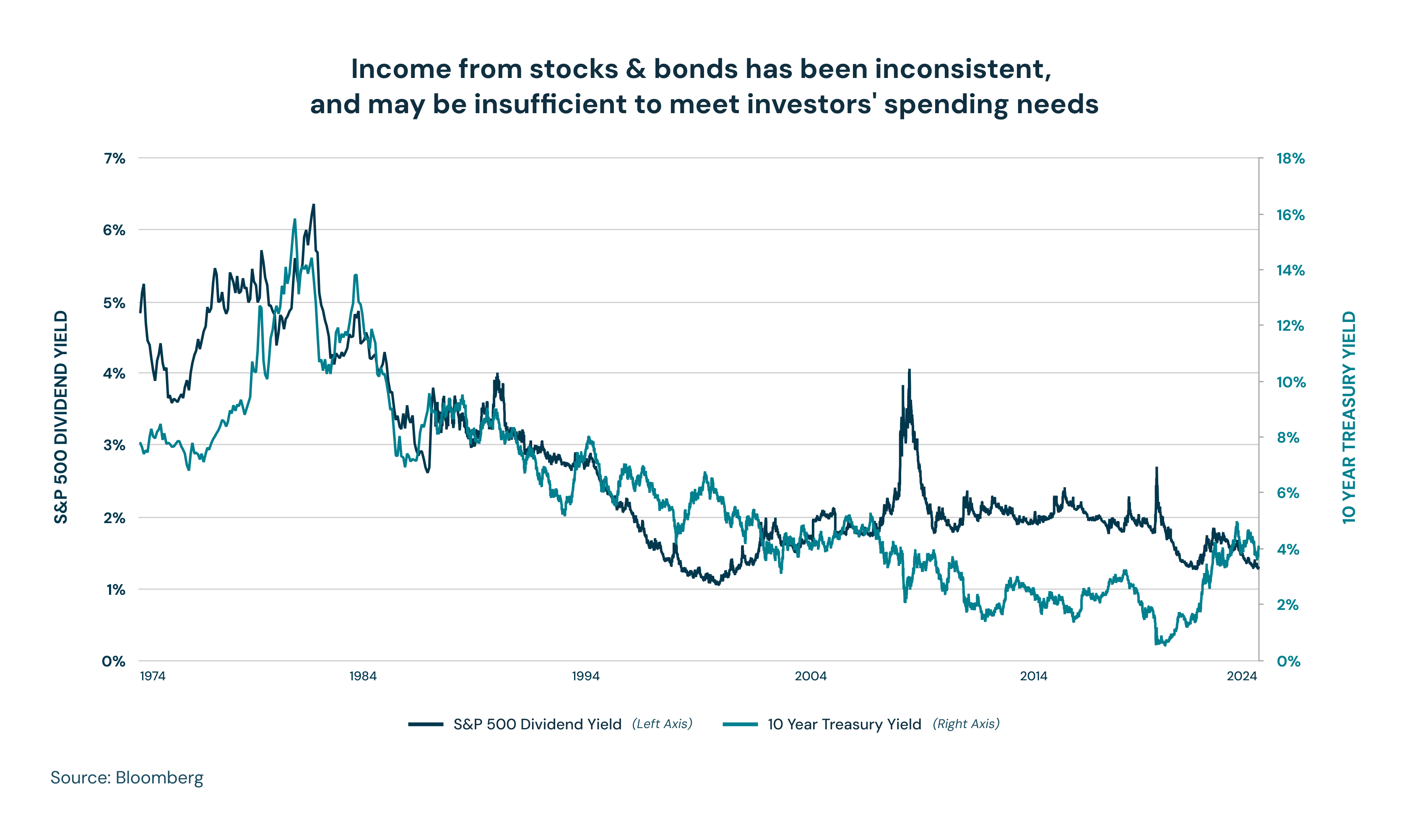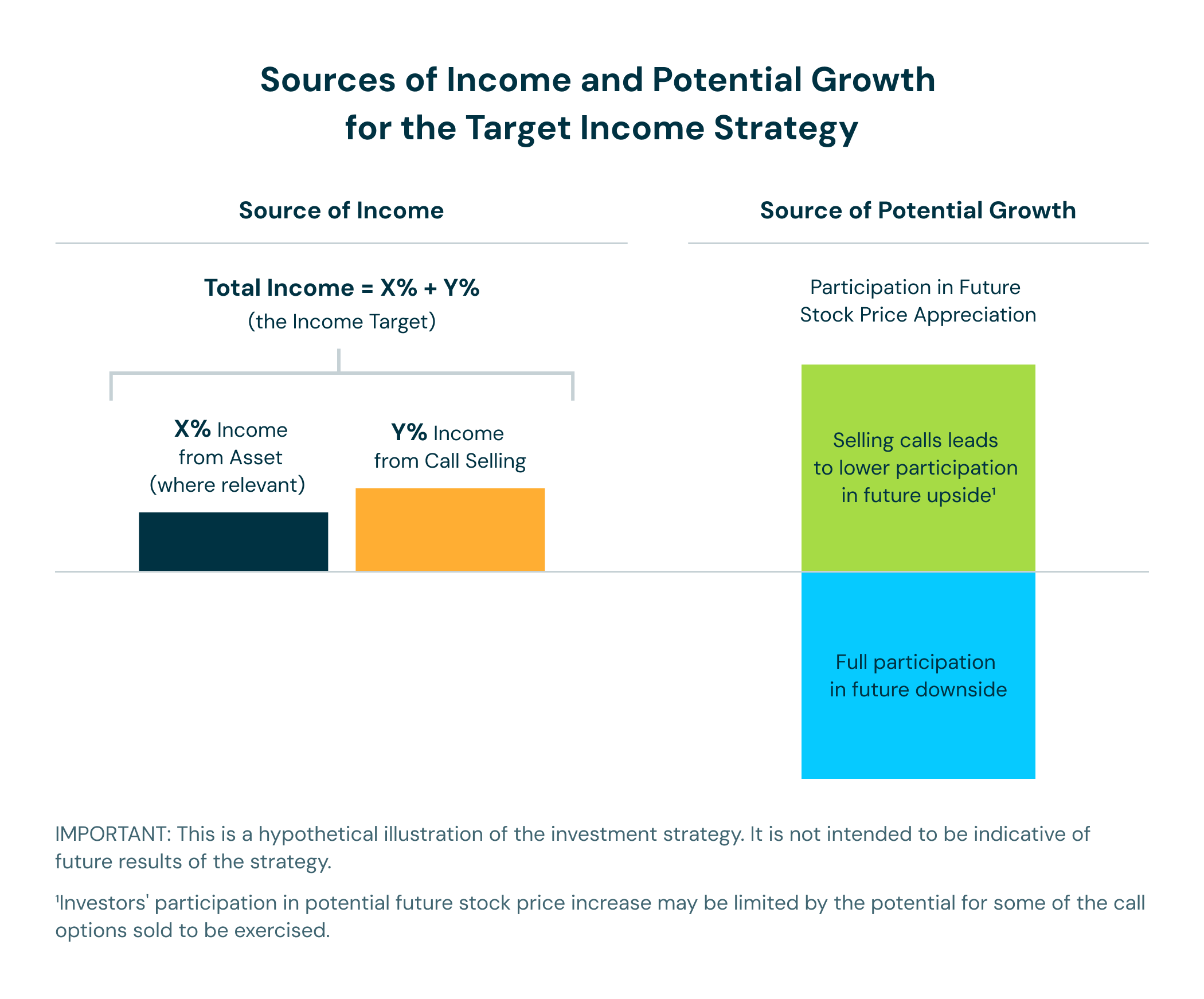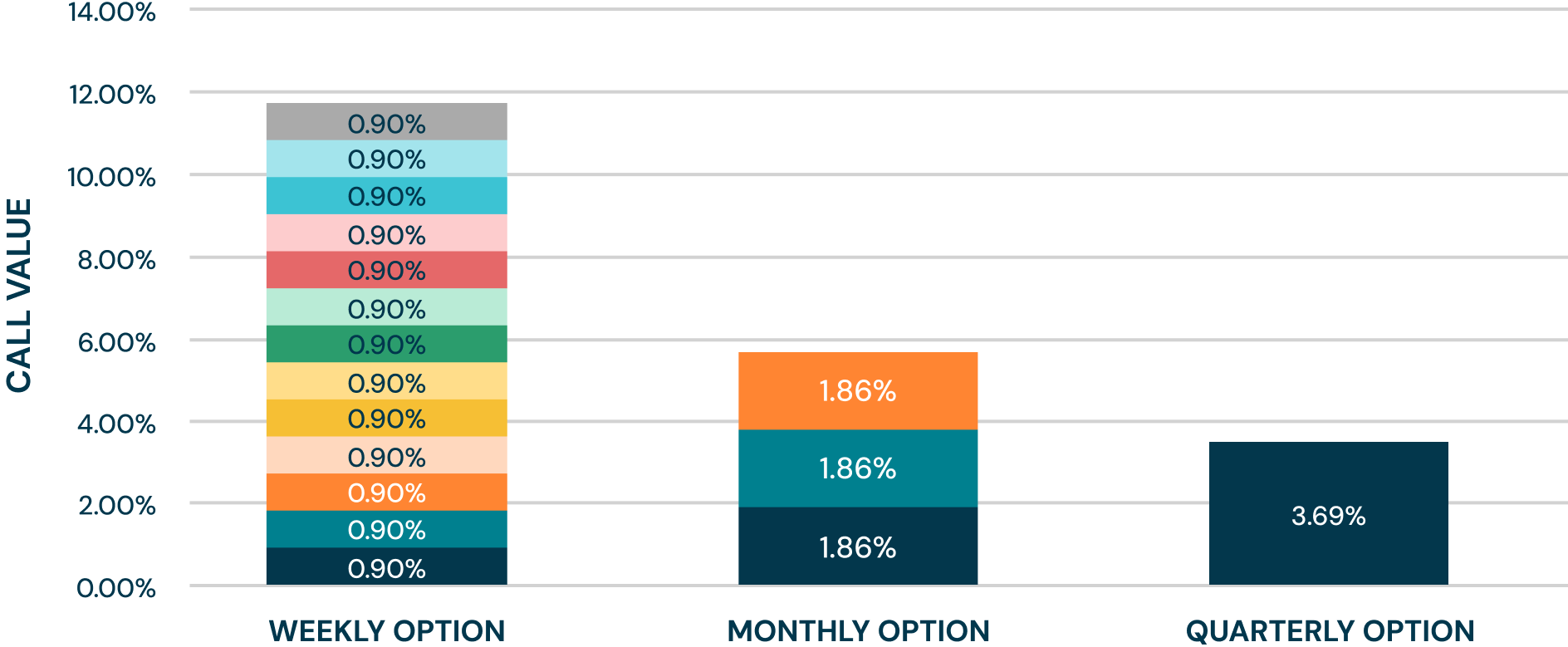Most income-focused investors require consistent cash flow to meet their expenses or financial goals. However, the yields from income-generating assets, such as bonds, dividend-paying stocks, and real estate, can vary widely due to factors like interest rate changes, market conditions and economic shifts.
The Target Income Strategy® seeks to reduce investors' exposure to the income gyrations of the markets, by dynamically working under the surface to pursue a steady and consistent level of income. It is a dynamic strategy that, when applied on a particular asset, responds to changing market conditions to bridge the gap between income needs and the income that asset yields.
The strategy augments income by converting some of the future uncertain growth of the asset into certain upfront income using options.







